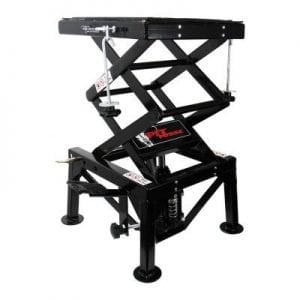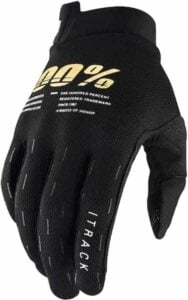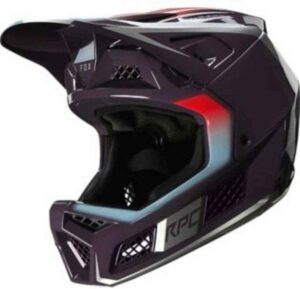We are reader-supported. When you buy through links on our site, we may earn an affiliate commission. Learn More…
Dirt Bike Tire Sizes Explained | Breakdown Charts & Graphs Included
Whatever walk of life you are from, and no matter vehicles you have owned, there is one thing that has likely confused you at one time or another. Just what do all of the numbers and letters on a dirt bike tire mean! Trying to break the code on a tire feels like you are trying to read some secret code or foreign language. This Dirt Bike Tire Sizes Guide will make your life much easier!
In this article, we will attempt to break that code. By the time you have finished reading, you will be able to look at a dirt bike tire and make sense of it – you will understand dirt bike tire sizes.
While we are at it, we may as well deal with another matter of much confusion. What are all of the different types of tire compound? Enduro, adventure, dirt bike and motocross all have a bewildering amount of tires for different surfaces and applications. You have probably asked yourself; “what tire should I buy for my dirt bike“?
In the following paragraphs, we will make sense of all of the variations, so that you can buy the right tire with confidence.
Let’s get stuck in!
What do the numbers mean on a dirt bike tire?

Let’s take a typical dirt bike tire size and break the numbers down, one by one.
On the sidewall of any tire, you will see a string of numbers. These numbers sit in the same order on most dirt bike tires. So if you are looking at a rear-wheel for a dirt bike, you might see: 120/100-18
These numbers represent (Left to right):
Tire width/Sidewall Aspect Ratio (height)-Rim diameter
As you can see, the code is straight forward enough. Of course, it is never as simple as it seems. There are a couple of quirks about tire sizing which you need to now. Thankfully, all tires have the same weird way of measuring, so once you understand these points, it is plain sailing.
- The width measures in mm – in this case 120mm
- The Sidewall aspect ratio (height) is a percentage figure. It represents the height as a percentage of the tire width. In this case, the sidewall height is 100% of the tire width. So the sidewall height is also 120mm
- The final figure, (Rim diameter) measures in inches. So, in our example, the tire is meant for a 19inch rim. Therefore the INTERNAL diameter of the tire is 19 inches across.

Example 2 of a dirt bike tire sizes:
What if we were looking to buy a 90/90-21 front tire for our dirt bike?
This tire would have a 90mm width.
The second figure is a percentage of the width. In this case 90% of
90 = 81 – therefore 81mm sidewall height.
Finally, the last figure is in inches and refers to the rim. This tire fits a 21-inch rim.
So far, so good!
What are the other letters and numbers on a dirt bike tire?
Aside from the manufacturer’s name, and the model of the tire, you may see other letters, marks and numbers.
If you see the letter R – this denotes the tire as a radial tire.
If there is no letter, or you see a B – then that tire is a bias (or cross) ply tire.
These descriptions refer to the direction of the inner meshing of the tire. It used to be that all motocross tires were Bias (cross) ply. Recently, however, some manufacturers have started offering radial options.
The most crucial point here is that you cannot mix radial and bias tires on your bike. If you go radial on the rear, you should match that on the front.
The reasoning behind this is that the sidewalls flex differently and cause a steering anomaly. Back in the seventies, there was a spate of severe accidents with cars turning over because of this. There are always people who like to experiment. A few riders are saying that on a dirt bike, this doesn’t matter, as the wheels are doing different things anyway. We feel that tires work together by design. One thing everyone agrees on is that if you want to take the risk of mixing radial and bias on a dirt bike, or motocross, then remember the adage: RADIAL: REAR
– Motocross Advice advises against riding mixed ply tires.
Other important information on your motocross tire
You may see a DOT rating. A DOT rating lets you know that the tire is legal for use on the road in the USA. Most dirt bike tires are not street legal, and will state “Not for use on the highway”. If you are in any doubt as to whether a tire is road legal or not, you should check with the manufacturer.
In the UK and Europe, if a tire is to be road legal, it will display the following code:
M/C (motorcycle) and then a number followed by a letter; 91V
91 is the load rating + V is the maximum speed rating. The only way to work these out is by checking a chart.
You will be able to find load ratings, and speed ratings here, if they apply to you.
Finding the balance point on a dirt bike tire
Many manufacturers will mark a tire at the balance point. The balance point is where the tire is at its lightest. As rotational forces amplify, things can get crazy. If you have ever seen a washing machine spinning with an uneven load, you will understand.
To help the tire fitter balance the tire, many factories stamp or chalk the tire at the lightest point. The mark could be a small yellow circle of paint, or similar. Always put the lightest point of the tire in line with where your tire valve is. The weight of the valve acts as a counterbalance, reducing the amount of adjustment required to balance the wheel.
Directional dirt bike tires
There is one more tire marking to be aware of, and that is a directional marker. Some tires only rotate one way. Directional design is linked to tread patterns. If your tire has an arrow on the sidewall, that is the direction of rotation.
Some dirt bike tires are reversible, and you can turn them round to gain a few more hours use.
Why are dirt bike tires categorised Soft, Intermediate (Medium) & Hard?
These categories are related to the terrain you ride on, and the compound of the tire. When we talk about a soft tire in motocross, we are referring to the condition of the ground, not the rubber. A “soft” tire is a harder compound. The name can be confusing because we often talk of a soft compound dirt bike tire – meaning a compound for soft terrain.
Terrain/tire categories fall as follows:
Sand tire:
Desert and desert trail, beaches.
Soft dirt bike tire:
For sand, very loose powdery surfaces, and loose loam, muddy conditions.
Intermediate dirt bike tire:
For a broad range of surfaces where you may encounter sand, mud, loam, packed, and some rocky surfaces. The majority of your riding will be between rutted mud, dirt and packed ground.
Hard dirt bike tire:
To run on Trails, rocky terrain, and routes with tree debris, and other obstacles.
Manufacturers are forever developing new technologies and features. Many now manufacture hybrid tyres which are labelled “soft-intermediate” or “intermediate-hard.” These mixtures of compound help weekend riders make a perfect choice for their local terrain and give competitive riders scope to gain an advantage in a race through tire choice.
So that is our 101 for dirt bike tires and dirt bike tire sizes. Tires are a personal choice. You will have hours of fun deciding which ones work for you.
Finally, don’t forget to maintain your dirt bike tires for maximum wear and performance over the tire’s lifetime.
We will be back with more Motocross Advice soon.
Have fun out there!
Martin






I’ve heard of some top 5 Pros in the AMA Nationals riding nothing but one tire no matter the conditions.
That is very interesting. Something new for my ears, but it might be that they have some ultimate universal tire that works best in most USA terrains. In Europe MXGP the terrain varies a lot from deep sand to super hard packed so you need to choose your tires.
on a knobby tire if the width is 120mm does that include the knobs the entire tire since some knobs are protruding on the side a bit
also when you have 120/70/-17 front and a 120/70-17 rear, i see that it gives 4.25 to 4.5 vs 4.5 to 4.75 inches for the rear so is their a difference in the width of the tire front back with same size??